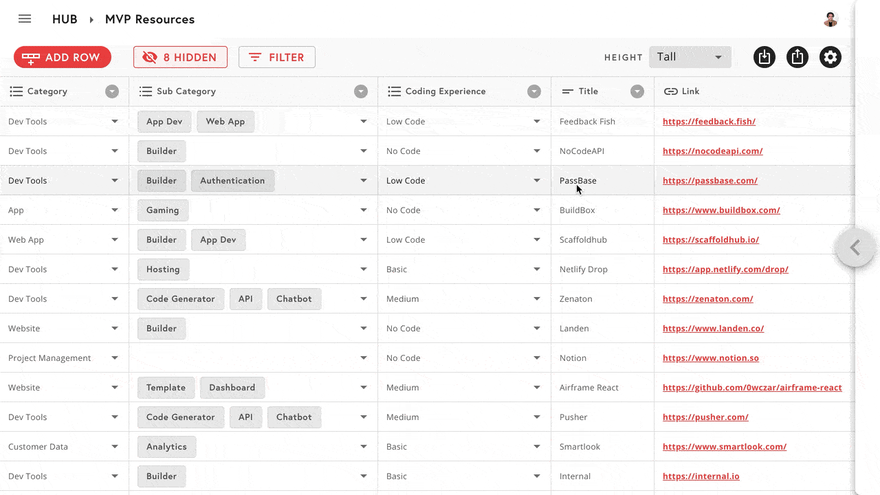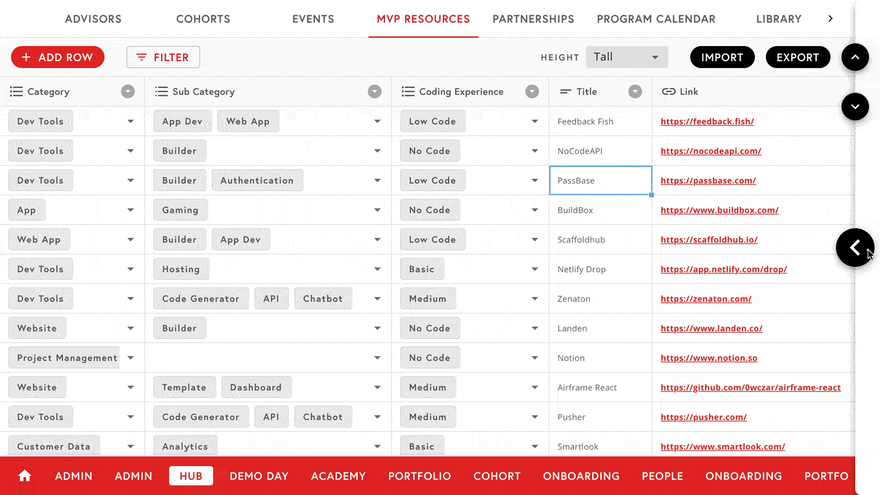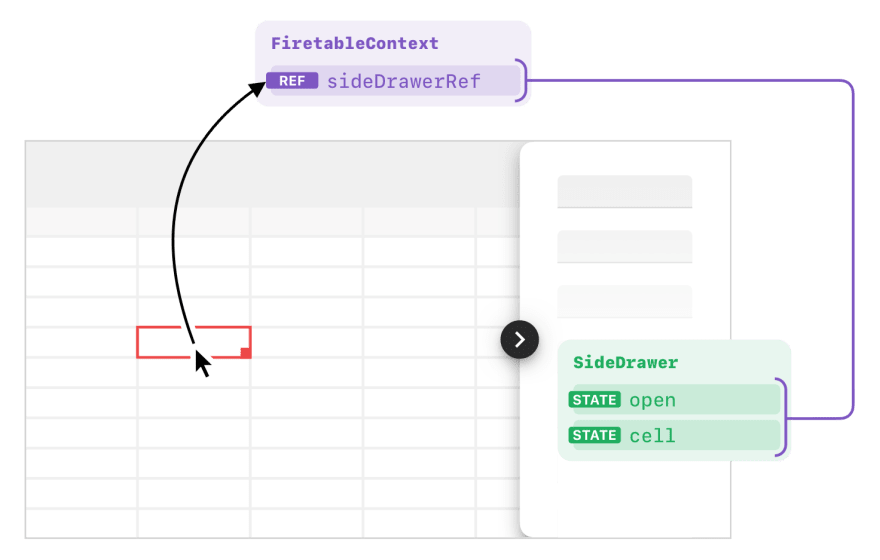How to useRef to Fix React Performance Issues
And how we stopped our React Context re-rendering everything
Refs are a seldom-used feature in React. If youve read the official React guide, theyre introduced as an escape hatch out of the typical React data flow, with a warning to use them sparingly, and theyre primarily billed as the correct way to access a components underlying DOM element.
But alongside the concept of Hooks, the React team introduced the useRef Hook, which extends this functionality:
useRef()is useful for more than therefattribute. Its handy for keeping any mutable value around similar to how youd use instance fields in classes.
While I overlooked this point when the new Hook APIs launched, it proved to be surprisingly useful.
Click here to skip to the solution and code snippets
The Problem
Im a software engineer working on Firetable, an open-source React app that combines a spreadsheet UI with the full power of Firestore and Firebase. One of its key features is the side drawer, a form-like UI to edit a single row, that slides over the main table.
When the user clicks on a cell in the table, the side drawer can be opened to edit that cells corresponding row. In other words, what we render in the side drawer is dependent on the currently selected rowthis should be stored in state.
The most logical place to put this state is within the side drawer component itself because when the user selects a different cell, it should only affect the side drawer. However:
We need to set this state from the table component. Were using
react-data-gridto render the table itself, and it accepts a callback prop thats called whenever the user selects a cell. Currently, its the only way to respond to that event.But the side drawer and table components are siblings, so they cant directly access each others state.
Reacts recommendation is to lift this state to the components closest common ancestor, in this case, TablePage. But we decided against moving the state here because:
TablePagedidnt contain any state and was primarily a container for the table and side drawer components, neither of which received any props. We preferred to keep it this way.We were already sharing a lot of global data via a context located close to the root of the component tree, and we felt it made sense to add this state to that central data store.
TablePage, we would have run into the same problem below anyway.The problem was whenever the user selected a cell or opened the side drawer, the update to this global context would cause the entire app to re-render. This included the main table component, which could have dozens of cells displayed at a time, each with its own editor component. This would result in a render time of around 650 ms(!), long enough to see a visible delay in the side drawers open animation.
Notice the delay between clicking the open button and when the side drawer animates to openThe reason behind this is a key feature of contextthe very reason why its better to use in React as opposed to global JavaScript variables:
All consumers that are descendants of a Provider will re-render whenever the Providers
valueprop changes.
While this Hook into Reacts state and lifecycle has served us well so far, it seems we had now shot ourselves in the foot.
The Aha Moment
We first explored a few different solutions (from Dan Abramovs post on the issue) before settling on useRef:
Split the context, i.e. create a new
SideDrawerContext.
The table would still need to consume the new context, which still updates when the side drawer opens, causing the table to re-render unnecessarily.Wrap the table component in
React.memooruseMemo.
The table would still need to calluseContextto access the side drawers state and neither API prevents it from causing re-renders.Memoize the
react-data-gridcomponent used to render the table.
This would have introduced more verbosity to our code. We also found it prevented necessary re-renders, requiring us to spend more time fixing or restructuring our code entirely, solely to implement the side drawer.
While reading through the Hook APIs and useMemo a few more times, I finally came across that point about useRef:
useRef()is useful for more than therefattribute. Its handy for keeping any mutable value around similar to how youd use instance fields in classes.
And more importantly:
useRefdoesnt notify you when its content changes. Mutating the.currentproperty doesnt cause a re-render.
And thats when it hit me:
We didnt need to store the side drawers statewe only needed a reference to the function that sets thatstate.
The Solution
Keep the open and cell states in the side drawer.
Create a ref to those states and store it in the context.
Call the set state functions (inside the side drawer) using the ref from the table when the user clicks on a cell.
The code below is an abbreviated version of the code used on Firetable and includes the TypeScript types for the ref:
cell or open state updates (and causes a re-render), sideDrawerRef always has the latest value in.current.This solution proved to be the best since:
The current cell and open states are stored inside the side drawer component itself, the most logical place to put it.
The table component has access to its siblings state when it needs it.
When either the current cell or open states are updated, it only triggers a re-render for the side drawer component and not any other component throughout the app.
You can see how this is used in Firetable here and here.
When to useRef
This doesnt mean you should go ahead and use this pattern for everything you build, though. Its best used for when you need to access or update another components state at specific times, but your component doesnt depend or render based on that state. Reacts core concepts of lifting state up and one-way data flow are enough to cover most app architectures anyway.
Thanks for reading! You can find out more about Firetable below and follow me on Twitter @nots_dney as I write more about what were building at Antler Engineering.
Features
Spreadsheet interface for viewing Firestore collections, documents, andsubcollections.
- Add, edit, and delete rows
- Sort and filter by row values
- Resize and rename columns
27 different column typesRead more
- Basic types: Short Text, Long Text, Email, Phone, URL
- Custom UI pickers: Date, Checkbox, Single Select, Multi Select
- Uploaders: Image, File
- Rich Editors: JSON, Code, Rich Text (HTML)
Powerful access controls with custom user rolesRead more
Supercharge your database with your own scripts.
- Action field: trigger any Cloud Function
- Derivative field: populate cell with value derived from the rest of therows values
- Aggregate field: populate cell with value aggregated from the rowssub-table
Integrations with external services.
- Connect Table uses Algolia to get a snapshot of another tables row values
- Connect Service uses any HTTP endpoint to get a cell value
Firetable makes it easy to use key Firebase products
Live demo
Getting started
To set
If youre launching a product and are hungry to build your next company, Antler would love to hear from you. Were accepting applications all across the world! Apply here.
Original Link: https://dev.to/notsidney/how-to-useref-to-fix-react-performance-issues-e8p
Dev To
 An online community for sharing and discovering great ideas, having debates, and making friends
An online community for sharing and discovering great ideas, having debates, and making friendsMore About this Source Visit Dev To










